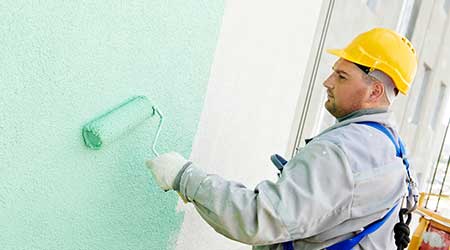Paints and Coatings That Address Environmental Issues
Specifying to meet facility sustainability needs means staying abreast of changes in products and applications
In the drive to address environmental challenges, manufacturers have focused on turning out products that are even more environmentally friendly. As a result, performance measures such as ease of application, health and safety impact, resistance to degrading, low toxicity, and efficiency also have improved, and green labeling reflect these values.
One example of this evolution involves defoamers. Most of these products are nonrenewable and mineral-oil-based. Mineral oil is being replaced by new natural renewable defoamers in water-based paint additives using soybeans, rapeseed and sunflowers. Defoaming efficiency has increased, along with gloss development, and their VOC levels are very low.
Manufacturers also have achieved greater performance efficiency using coalescent additives, which reduce minimum film-forming temperature, and dispersants, which improve hiding power, color, and stain and scrub resistance in waterborne paints.
Additives are improving functionality in an increasing number of other ways: better flow leveling to remove brush marks; antibacterial properties; removal of formaldehyde from the air; and faster drying. Additive manufacturers also are expanding product lines by adding targeted products and increasing participation in high-performance sectors.
Manufacturers also are continuing to remove even more problematic ingredients from paints and coatings, For example, manufacturers traditionally used costly nanometer titanium dioxide (TiO2) a whitener that blocks ultraviolet (UV) rays and preventing binder breakdown for better long-term tightness and improved self-cleaning.
The waste from TiO2 the manufacturing process includes dilute sulfuric acid and large amounts of other harmful compounds, and it is hard to treat before returning the process water to streams. Efforts to formulate paints with less TiO2 have led to substitutions, such as precipitated calcium carbonate. Standard tests have shown this combination improves brightness, coverage, and stability and withstands many scrubbings.
Related Topics:














